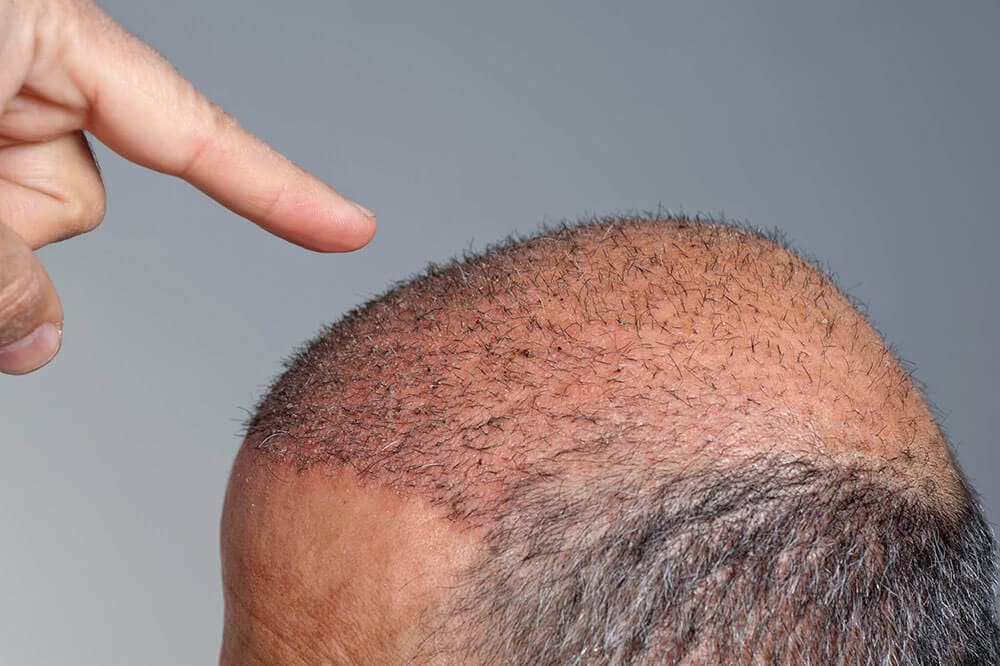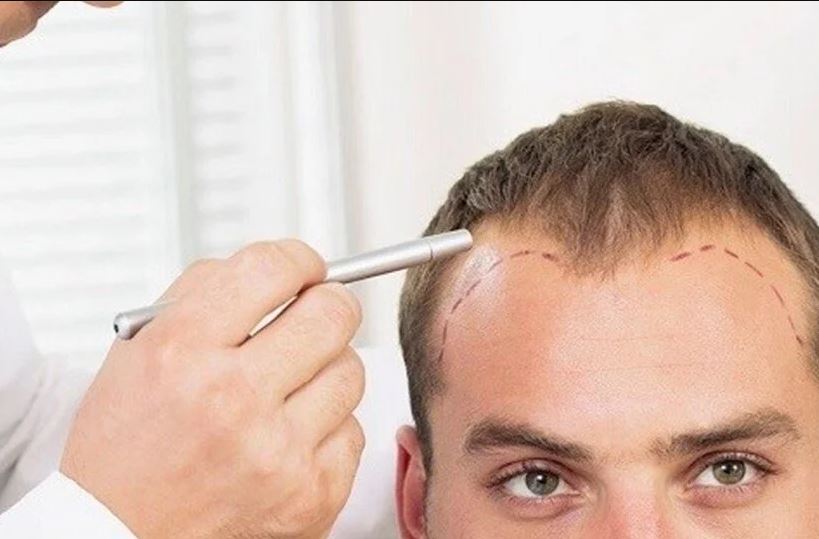
How is Hair Transplant for Women?
Women can also face hair loss problems just like men. While hair loss in women may not resemble androgenetic alopecia, which is commonly seen in men, it can still significantly affect their quality of life. Causes of hair loss in women include genetic predisposition, hormonal changes, nutritional deficiencies, stress, certain medications, and hair styling procedures.
Women usually experience hair loss in the form of hair thinning in the frontal hairline or general hair thinning. Hormonal changes, especially during menopause, are a common cause of hair loss in women. Postpartum hair loss is also a frequently occurring condition.
Hair loss treatment for women is typically done through non-invasive methods such as medication or hair mesotherapy, rather than radical methods like hair transplant surgery for men. Depending on the causes of hair loss, treatment is customized and determined by factors such as women’s genetic predisposition, hormone levels, and lifestyle.
Hair Transplantation Techniques for Women
Hair loss can be a problem for women just like men. Although female hair loss may not resemble male pattern baldness, it can still significantly impact the quality of life for women. Causes of hair loss in women include genetic predisposition, hormonal changes, nutritional deficiencies, stress, certain medications, and hair styling practices.
Women typically experience hair loss in the form of receding hairlines or overall thinning of hair. Hormonal changes, especially during menopause, contribute to hair loss in women. Additionally, postpartum hair loss is a common occurrence.
Treatment for hair loss in women typically involves non-invasive methods such as medication or hair mesotherapy rather than radical procedures such as hair transplantation surgery for men. Treatment for hair loss is individualized based on the causes of hair loss, genetic predisposition, hormonal levels, and lifestyle factors.
Hair transplantation for women cannot be performed using traditional hair transplantation techniques used for men. Women’s hair is generally thinner and more fragile than men’s, so special hair transplantation techniques have been developed specifically for women.
Here are some hair transplantation techniques for women:
- FUE Technique: Follicular Unit Extraction (FUE) is one of the most commonly used techniques for hair transplantation. FUE involves using microsurgical instruments to extract individual follicular units (1-4 hair follicles) from the scalp. This technique is ideal for fine and delicate hair, and the recovery time after hair transplantation is faster.
- DHI Technique: Direct Hair Implantation (DHI) is one of the most advanced hair transplantation techniques. In this technique, each follicular unit is extracted with a special tool and directly implanted into the scalp. This technique minimizes damage to the scalp and results in faster recovery time after hair transplantation.
- Robotic FUE Technique: Robotic FUE is a technology that uses a robotic device to extract follicular units more quickly and accurately. This technique results in a faster recovery time after hair transplantation.
Hair transplantation for women requires a more specialized approach than hair transplantation for men. Therefore, hair transplantation technique selection for women should be personalized based on the causes of hair loss and hair structure.
Hair Transplant Consultation and Planning
The consultation and planning phase before a hair transplant is crucial for a successful procedure. During this stage, experts at the hair transplant clinic conduct a detailed analysis of the patient’s hair structure, degree of hair loss, and suitable areas for hair transplantation. Here are some topics that can be covered during the consultation and planning phase:
- Choosing a Hair Transplant Clinic: Choosing the right clinic is crucial for a successful hair transplant. Therefore, the first step is to select a hair transplant clinic and conduct a detailed research on its references, experts, equipment, and technologies.
- Pre-Transplantation Consultation: The pre-transplantation consultation conducted by the hair transplant clinic analyzes the patient’s hair structure, degree of hair loss, suitable areas for hair transplantation, and hair transplantation methods.
- Hair Analysis: Hair analysis provides detailed information about the patient’s scalp and hair quality. This stage examines the hair density, thickness, degree of hair loss, hairlines, and suitable areas for hair transplantation.
- Hair Transplant Planning: Hair transplant planning is a process based on the hair analysis. During this stage, suitable areas for hair transplantation are determined, and decisions are made on hair transplantation method, hair transplantation technology, number of required grafts, and the number of sessions required for the hair transplantation procedure.
- Pre-Transplantation Preparation: Pre-transplantation preparation is crucial to obtain the best possible results from the hair transplantation procedure. During this stage, it is essential to avoid harmful habits such as alcohol and smoking, take medication regularly, and maintain scalp hygiene.
The consultation and planning phase before a hair transplant are crucial for a successful hair transplantation procedure. Making the right decisions during this stage is essential for the patient’s satisfaction with the results of the hair transplant.
Anesthesia During Hair Transplantation
Anesthesia during hair transplantation is essential as it helps to reduce pain and discomfort during the procedure. Additionally, anesthesia makes the patient more comfortable and relaxed during the procedure. Here is what you need to know about anesthesia during hair transplantation:
- Local Anesthesia: Local anesthesia is applied to the area where hair transplantation will be performed. Local anesthesia reduces pain and discomfort, making the patient more comfortable during the procedure. Typically, local anesthesia is used during hair transplantation.
- Needle Use: Needle use is necessary for anesthesia administration. However, the thin needles used in hair transplantation clinics result in minimal pain.
- Effect of Anesthesia: Local anesthesia blocks the nerves in the area where hair transplantation will be performed, reducing pain. The effect of anesthesia gradually decreases as the procedure progresses.
- Types of Anesthesia: There are two types of anesthesia commonly used during hair transplantation procedures: local anesthesia and intravenous (IV) sedation anesthesia. Local anesthesia is used to reduce pain, while IV sedation anesthesia helps the patient relax and makes the procedure more comfortable.
Anesthesia during hair transplantation makes the procedure more comfortable and less painful. Local anesthesia reduces pain and discomfort, making the patient more comfortable during the procedure. Anesthesia is crucial for the successful completion of a hair transplantation procedure.
The Recovery Process and Recommendations After Hair Transplant
The recovery process after a hair transplant can vary depending on the techniques used during the procedure, the size of the transplant area, and the post-operative care taken. However, generally, the recovery process takes around 2-3 weeks. Here are the recovery process and recommendations after a hair transplant:
First 48 Hours: During the first 48 hours after the hair transplant, it is recommended to rest with the head and neck elevated to ensure sufficient blood flow to the scalp. It is also important to avoid touching the transplanted area during this period.
First Week: During the first week, there may be mild swelling and crusting in the transplant area. It is important to clean the area gently, removing any crusts and scabs. You can use the shampoo recommended by your doctor to wash the transplanted area.
First Month: During the first month, there may be mild itching and irritation in the transplant area. Wearing a headband to protect the area is recommended during this time. Additionally, avoiding hot and humid environments and excessive sun exposure is important.
First 3 Months: During the first 3 months, there may be some shedding of the transplanted hair as the new hair grows in. This is a normal process, and it creates space for new hair growth. During this time, regularly moisturizing the transplant area, maintaining a healthy diet, and exercising can help promote faster hair growth.
First 6 Months: During the first 6 months, hair growth begins gradually. It is expected that the hair in the transplant area will start to grow during this period. It is important to protect the transplant area from the sun and avoid tight-fitting clothes during this time.
The recovery process and post-operative care are crucial for a successful hair transplant. It is essential to follow the recommendations and instructions provided by your doctor to achieve the desired results.
Aftercare and Shampoo Use After Hair Transplantation
Post-operative care is essential for healthy growth of newly transplanted hair after a hair transplantation. Therefore, post-operative care and recommended shampoo use after hair transplantation should be carefully followed. Here are some things you need to know about post-operative care and shampoo use after hair transplantation:
First 2 Weeks: During the first 2 weeks after the hair transplantation, avoid touching, rubbing or scratching the transplanted area. Shampoo use should be done as recommended by your doctor.
Weeks 2-4: After the first 2 weeks, the scabs in the transplanted area will start to fall off slowly. During this period, you can gently wash the transplanted area with the shampoo recommended by your doctor.
First 3 Months: Moisturizing the transplanted area is important for healthy growth of new hair during the first 3 months. You can regularly moisturize the transplanted area with the moisturizer recommended by your doctor.
3-6 Months: During the 3-6 month period after the hair transplantation, it is important to avoid activities that may harm the transplanted area. You should avoid wearing tight clothes, tightly tying your hair, and other harmful behaviors that may damage the transplanted area.
After 6 Months: After 6 months, the hair in the transplanted area will gradually reach its normal growth rate. Therefore, it is important to regularly cut and maintain your hair as recommended by your doctor. Coloring your hair normally is also possible after a hair transplantation.
Post-operative care and shampoo use after hair transplantation help promote healthy growth of newly transplanted hair. Proper cleaning, protection, and moisturizing of the transplanted area is important. Regularly clean and maintain the transplanted area with the shampoo recommended by your doctor.
Criteria for Women to be Suitable Candidates for Hair Transplant
Women can also have hair transplant surgery, but as the pattern of hair loss in women is different from men, the criteria for women to be suitable candidates for hair transplantation are also different. Here are the criteria for women to be suitable candidates for hair transplant surgery:
Hair Loss Cause Should be Determined: Women’s hair loss can be due to different factors such as hormonal changes, stress, improper diet, or constantly changing hair style. Therefore, to be a suitable candidate for hair transplant surgery, the cause of hair loss should be determined.
Hair Loss Should be Stable: Before hair transplant surgery, women’s hair loss should be stable. If hair loss continues after hair transplantation, there is a risk of losing the transplanted hair.
Donor Area Should be Suitable: Women who are suitable for hair transplant surgery generally have thicker and denser hair in the donor areas located at the back of the head. Hair follicles taken from the donor area are transplanted to the area where hair loss is present.
No Age Limitation: There is no age limit for women to have hair transplant surgery. However, women who experience hair loss problems are generally over 25 years old.
Health Condition Should be Suitable: Hair transplant surgery is a surgical procedure, so women’s health condition should be suitable. The doctor will approve the hair transplant surgery according to the woman’s health condition.
Expected Results Should be Suitable: Women should understand the expected results of hair transplant surgery correctly. Hair transplant surgery can help to make hair thicker and fuller, but it cannot create a completely new hair structure.
The criteria for women to be suitable candidates for hair transplant surgery are different from men. The cause of hair loss should be determined, hair loss should be stable, the donor area should be suitable, and the health condition of the woman should be suitable. Additionally, it is important for women to understand the expected results of hair transplant surgery correctly.
Possible Complications and Solutions After Hair Transplant
While hair transplant is generally a safe procedure, as with any surgical intervention, there may be some possible complications. Here are some possible complications and solutions after hair transplantation:
- Swelling: Mild swelling after hair transplantation is normal. However, if there is severe swelling, it may indicate inflammation or infection. In this case, you can control the infection by using antibiotics recommended by your doctor.
- Pain and Discomfort: Pain and discomfort are normal after hair transplantation, but if there is severe pain, you may need to consult your doctor. You can relieve the pain with painkillers.
- Bleeding: Mild bleeding after hair transplantation is normal, but if there is severe bleeding, you should call your doctor immediately.
- Infection: There is a risk of infection after hair transplantation. Therefore, it is important to follow your doctor’s recommended hygiene and antibiotic usage guidelines.
- Crusting: Crusting may occur in the transplanted area after hair transplantation. This is normal, and the crusts will fall off within a few weeks. Follow your doctor’s recommended care instructions to alleviate crusting.
- Shedding of Transplanted Hair: The transplanted hair may shed during the first few weeks after hair transplantation. This is a normal process and prepares the scalp for regrowth.
- Misplacement: There is a risk of misplaced grafts after hair transplantation. In this case, you can work with your doctor to develop a plan to correct the issue.
Possible complications after hair transplantation are generally minimal and usually resolve on their own within a few weeks. However, if a severe situation arises, you should consult your doctor. To prevent complications, it is important to follow your doctor’s recommended instructions before and after the hair transplantation.
Hair Transplant Costs and Pricing for Women
Turkey is one of the countries with the best hair transplant centers in the world. Therefore, hair transplant prices for women in Turkey may be more affordable compared to other countries. However, prices can still vary from clinic to clinic and depending on the technology and methods used. Generally, hair transplant prices for women in Turkey are more affordable than in other countries, which is why many people from abroad choose Turkey for their hair transplant.
Hair transplant prices for women can vary depending on the method used. For example, prices for hair transplant with the FUE method can range from 20,000 TL to 30,000 TL on average. Prices for hair transplant with the FUT method can range from 15,000 TL to 25,000 TL on average. Prices for hair transplant with the DHI method can range from 20,000 TL to 40,000 TL on average. These prices should be clearly determined, including the services and additional fees offered by the clinics.
Although hair transplant in Turkey for women is more affordable than in other countries, it can still be a significant investment. Therefore, it is important to compare prices and services offered by different clinics before making a decision. Additionally, the experience and references of the clinic and doctor performing the procedure should also be taken into consideration.

Hair transplantation is a surgical procedure performed to restore natural-looking hair to those who ..
Devamını oku
Hair transplant has become an increasingly popular aesthetic procedure in recent years. Hair loss ca..
Devamını oku
The administration of local anesthesia is a common practice before hair transplant surgery. Local an..
Devamını oku
Hair transplant surgery is a surgical procedure performed to increase hair density in individuals ex..
Devamını oku
Women can also face hair loss problems just like men. While hair loss in women may not resemble andr..
Devamını oku
Hair transplantation has become an increasingly popular aesthetic procedure worldwide in recent year..
Devamını oku
Hair loss is a common problem nowadays. People who want to cope with this problem can achieve health..
Devamını oku
Before undergoing a hair transplant procedure, certain tests are performed to evaluate the individua..
Devamını oku
Hair transplant is a surgical procedure performed to address baldness or thinning hair on a person's..
Devamını oku
Alcohol and smoking have a number of negative effects before and after hair transplant surgery. Firs..
Devamını oku
Hair transplantation is the process done to bring the hair in the old appearance of the hair in area..
Devamını oku
There are different types of rhinoplasty and it is important to decide which type is suitable for yo..
Devamını oku
Hair transplantation has gained increasing popularity in recent years and mild pain is normal after ..
Devamını oku
It is a popular solution for many people with hair loss and hair loss problems. However, it is impor..
Devamını oku
Nose aesthetics (rhinoplasty) is a surgical procedure that changes the shape of the nose. The aim of..
Devamını oku
There are many options among the cutting-edge hair transplantation methods. Developing technology ha..
Devamını oku
The process of passing the hair transplantation scar varies depending on the technique used. While s..
Devamını oku
It is possible to transplant sparse hair and give it a more lush structure. People may lose their ha..
Devamını oku
The duration of the hair transplant operation differs according to the preferred method. However, a ..
Devamını oku
Headbanding of hair transplant patients, it is done to reduce the symptoms caused by the surgery. Ha..
Devamını oku
Corona virus is a derivative of a group of RNA viruses and can be caused by a respiratory infection ..
Devamını oku
Edema after hair transplantation is known as an edema that is given after the completion of the hair..
Devamını oku
In hair transplantation, the donor area is the area where the hair strands used in hair transplantat..
Devamını oku
Gastric sleeve surgery is a surgical procedure, and a tube is placed in the stomach. After this tube..
Devamını oku
Greetings everyone. Today we will touch on a seemingly simple but very important point. Before the h..
Devamını oku
How Does Hair Transplant Surgery Work for an HIV Patient? The surgical hair restoration process is ..
Devamını oku
Stubborn fat may occur in certain areas of the body due to reasons such as weight gain, pregnanc..
Devamını oku
What is Leakage After Sleeve Gastrectomy ? Sleeve Gastrectomy has been done since the 90’s. But it ..
Devamını oku
 EN
EN TR
TR FR
FR ES
ES DE
DE